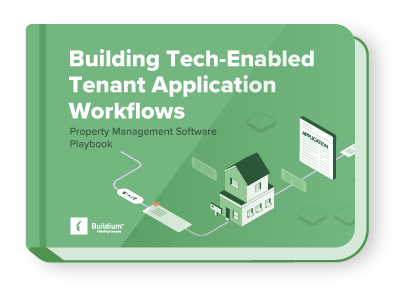With the growing trend of pet-friendly rental homes and apartments, understanding pet deposits is becoming increasingly important for property managers. Pet deposits not only help protect the property but also offer property managers financial security in case of damage caused by tenants’ pets.
This blog post will guide you through the basics of pet deposits, what they entail, their legal considerations, and the pros and cons of implementing them. Whether you’re a seasoned property manager or someone new to the field, this guide will equip you with the knowledge to make informed decisions about handling pet deposits in your rental properties.
What Is a Pet Deposit?
A pet deposit is a sum of money that a tenant pays to the landlord or property manager before moving in with a pet. This deposit covers any potential damages to the property caused by the pet during the tenancy. Pet deposits are usually separate from regular security deposits and are used solely for pet-related issues.
Pet Deposit vs. Pet Fee
A pet fee is a one-time, non-refundable charge that a tenant pays for the privilege of having a pet on the property. In contrast, a pet deposit is generally refundable at the end of the lease, provided no damage occurs due to the pet.
Furthermore, some property managers combine both a pet fee and a pet deposit in their rental agreements. However, these two charges serve different purposes: the pet fee covers administrative costs, while the pet deposit covers any damage caused by the animal.
Refundable vs. Non-Refundable Deposits
A refundable pet deposit is returned to the tenant at the end of their lease, minus any deductions for pet-related damages. On the other hand, a non-refundable pet deposit or fee is not returned to the tenant, even if no damage occurs. In most cases, refundable deposits are the more common approach, but it’s important to clearly outline the terms in the lease agreement.
Legal Considerations for a Pet Deposit
Laws regarding pet deposits can vary depending on the location of the property, so property managers must follow both state and local regulations. The information here provides basic information but be sure to talk to a legal professional with expertise in your area for the most accurate and up-to-date details.
Maximum Deposit Amounts
Many jurisdictions have laws governing the maximum amount that can be charged for a pet deposit. For example, some states may limit pet deposits to a certain percentage of the rent or a set dollar amount. Property managers must be aware of these limitations and adjust their pet deposit policies accordingly.
State-Specific Laws
Each state has its own laws regarding pet deposits. Some states, such as California, allow property owners to charge a pet deposit, but they also have strict rules on how much can be charged and how deposits must be handled. Other states may have no specific guidelines on pet deposits, but they may still regulate general security deposit practices, including those for pets. For instance, some regions require pet deposits to be returned within a specific time frame (e.g., 30 days), or they may limit the total amount a property manager can collect.
Service Animals and Emotional Support Animals
One important legal consideration for property managers is the distinction between pets and service animals/emotional support animals (ESAs). Federal law, particularly the Fair Housing Act (FHA), requires landlords to make reasonable accommodations for tenants with disabilities, which includes allowing service animals and ESAs in rental properties, even if the property has a no-pet policy. Importantly, property managers cannot charge pet deposits or fees for service animals or ESAs, as they are necessary accommodations rather than pets.
Staying Compliant
To avoid legal pitfalls, property managers should familiarize themselves with their state’s specific laws related to pet deposits and always follow local guidelines. Consulting with legal counsel or a property management expert can also be a wise choice to stay fully compliant.
Pros and Cons of Implementing a Pet Deposit
Before deciding whether to implement pet deposits, property managers should weigh the potential advantages and disadvantages.
Pros:
- Property Protection: Pet deposits offer property managers financial protection against potential pet-related damage. Pets, especially dogs, can sometimes cause wear and tear to floors, walls, or carpets. The deposit helps cover the costs of repairing any damage caused by a tenant’s pet.
- Tenant Accountability: Requiring a pet deposit holds tenants accountable for their pet’s behavior. Tenants are more likely to be careful with their pets when they know they will be financially responsible for any damage caused.
- Appeal to Pet Owners: Offering a pet deposit (or fee) allows property managers to cater to the growing number of pet owners who are looking for rental properties that allow pets. This can help increase occupancy rates and attract a wider pool of potential tenants.
- Clear Expectations: Including pet deposits in the lease agreement sets clear expectations for tenants. They know what is expected of them regarding their pets, reducing misunderstandings or conflicts later on.
Cons:
- Discouraging Potential Tenants: Some tenants may be discouraged by the idea of paying a pet deposit. While many pet owners are used to paying extra fees for their animals, some might choose to look for properties that don’t require such charges, particularly if they feel the deposit is too high.
- Disputes Over Damage: Pet deposits can sometimes lead to disputes when tenants move out. Tenants may feel that the damage caused by their pet was minimal or already existed, leading to disagreements over how much of the deposit should be returned.
- Administrative Workload: Managing pet deposits requires additional administrative effort. Property managers must track deposits, inspect for pet-related damages, and process returns or deductions from the deposit. This can increase workload and require careful record-keeping.
Pet Deposit Best Practices for Property Managers
To make the experience with pet deposits enjoyable, property managers should implement best practices that protect both their properties and relationships with tenants.
Clear Pet Policies in the Lease Agreement
Clearly outline your pet policy in the lease agreement, including details about pet deposits, pet types allowed, and any restrictions (such as breed or size limits). Having clear guidelines in writing helps manage tenant expectations and reduces potential conflicts.
Regular Property Inspections
Regular property inspections are significant when pets are involved. Conducting routine inspections ensures that any damage caused by a pet is identified early and can be deducted from the pet deposit when the tenant moves out.
Be Transparent About Deposit Deductions
Be transparent about how the pet deposit will be handled. If there are damages, provide a detailed breakdown of how the deposit is being used for repairs. This helps tenants feel that the process is fair and transparent.
Return Deposits Promptly
Returning the deposit promptly and providing an itemized list of deductions helps maintain a positive relationship with tenants, even if there are issues with damage. Timeliness in returning deposits also helps comply with state laws.
Frequently Asked Questions
Can I be charged a pet deposit for my service animal?
No, property managers cannot charge pet deposits or fees for service animals or emotional support animals (ESAs). These animals are considered necessary accommodations for tenants with disabilities under the Fair Housing Act.
How much can a property manager charge for a pet deposit?
The amount a property manager can charge for a pet deposit varies by state. Some states have specific limits on pet deposits, while others may regulate the total amount that can be collected for all security deposits, including pet deposits. It’s important to check your state’s specific laws to ensure compliance.
What happens if my pet causes damage beyond the pet deposit?
If the cost of repairs for pet-related damage exceeds the pet deposit amount, the tenant may be held responsible for the additional costs. This should be clearly outlined in the lease agreement, along with the process for assessing and charging for damages.
Read more on
